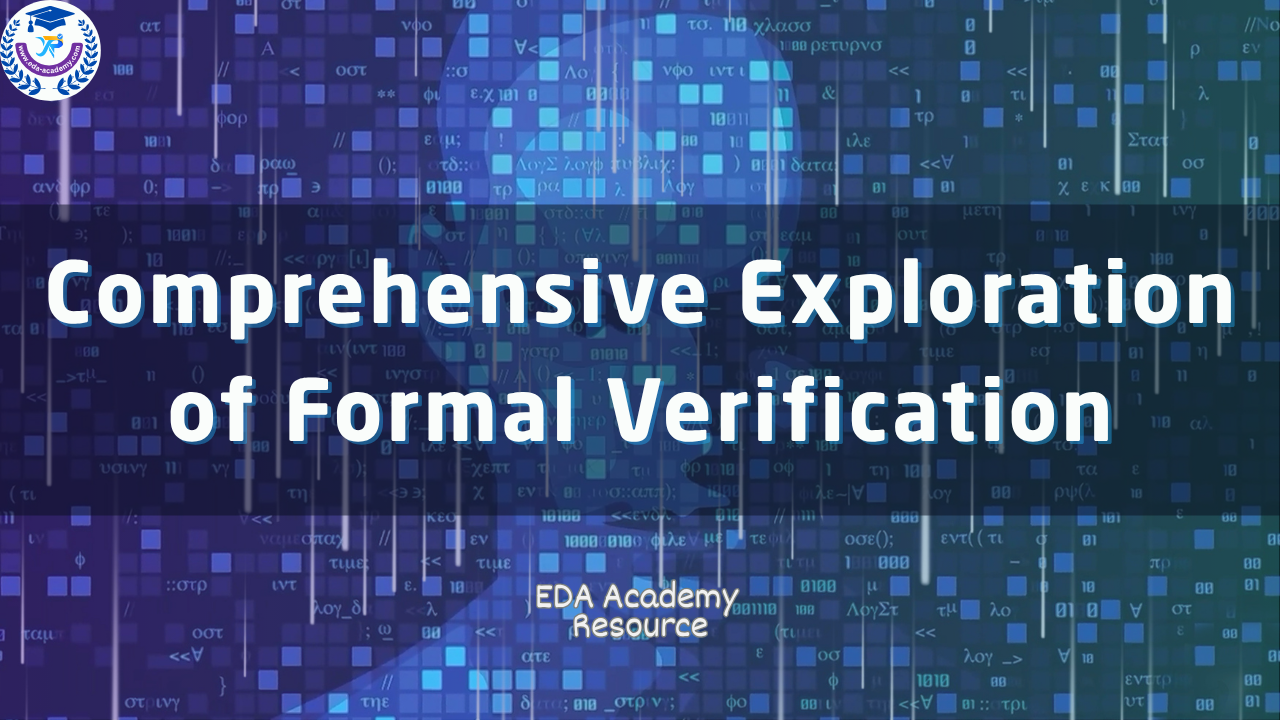Resource:
Comprehensive Exploration of Formal Verification (English)
Formal verification uses mathematical proof techniques to ensure design correctness under all possible input conditions. It includes methods such as Formal Property Verification (FPV) and task-specific formal apps, offering an alternative or complement to simulation. Key areas include symbolic state model creation, result interpretation, classification of outcomes, and strategies for managing complexity. Coverage types—such as bounded, unreachability, and proof-based metrics—support verification signoff. Application examples range from protocol validation and low-power analysis to security checks, with comparisons across tool platforms and usage models.
Purchase
Our course syllabus is regularly updated to reflect the latest advancements and best practices in the field. For individually purchased courses or resources with lifetime access, students can always access the content and receive updates for free. For members, all member-free courses and resources — including future updates — are accessible during the active subscription period. This ensures that both lifetime purchasers and active members can benefit from the most relevant and up-to-date content.
Created by EDA Academy
English
Last updated June 2025

Resource: Comprehensive Exploration of Formal Verification (English)
USD $199.9
-60%Today
$79.9
One-time Purchase
& Lifetime Access
What you will get:
1.4 Hours of Immersive, High-Quality Video Lessons
Professionally produced and delivered by our expert team, covering core concepts and practical demonstrations, with step-by-step explanations and real-life examples to help you efficiently absorb knowledge and apply it immediately in a short time.
Certificate of completion
Upon successful completion of the course, you will receive an official certificate issued by EDA Academy, adding value to your resume and career development.
Access on mobile and computer
The course can be viewed anytime on mobile phones, tablets, and computers, allowing you to learn easily whether at the office, at home, or on the go.
Ongoing support from EDA Academy
After the course ends, you will continue to receive ongoing support from our team to help you consolidate knowledge and solve practical problems.
Further learning plan
Provides you with follow-up learning paths and recommended resources, enabling you to continue improving your skills and expanding your career development based on what you have learned.
Resource Catalogue
Description
Formal verification applies mathematical logic to exhaustively analyze hardware design behavior without relying on traditional stimulus generation. Using assertions to define expected behavior, the process automatically proves or refutes these properties using symbolic solvers. This approach uncovers hard-to-reach bugs, unreachable states, and deadlocks across all legal execution paths, enhancing design reliability and reducing simulation blind spots.
The verification flow translates RTL into a symbolic state-transition model and applies synthesized checkers to explore legal state sequences. Proof outcomes are classified as proven, falsified (with counterexample), or inconclusive due to complexity. Successful application depends on effective property definition, design abstraction, and solver capability. Supporting elements include assertion checkers, environmental constraints, binding logic, and coverage tracking mechanisms.
Managing complexity is essential to enable analysis of large-scale designs. Factors such as state space size, sequential depth, constraint density, and duplication influence proof effort. Techniques like cone-of-influence pruning, abstraction, property slicing, and state cutpoints help reduce complexity. Formal tools provide estimation metrics to guide proof planning and optimization for better convergence.
Coverage models play a critical role in assessing verification completeness and determining signoff quality. Metrics include depth-limited proof success, endpoint observability, unreachable state detection, and toggle coverage. Verification strategies range from full proof of all properties to coverage-driven models depending on design criticality and project goals.
Task-specific formal apps streamline common verification challenges, such as clock-domain crossing validation, protocol compliance, and secure-state enforcement. These apps integrate checkers, constraints, and proof engines into focused workflows. Platform selection may involve evaluating solver strength, debug capability, model capacity, and simulation integration. Applying formal techniques strengthens overall verification quality and enhances confidence across IP blocks, subsystems, and full-chip designs.
We HATE spam. Your email address is 100% secure
The document will be emailed to you. Please check your Spam folder if it doesn’t appear in your inbox.
We HATE spam. Your email address is 100% secure
